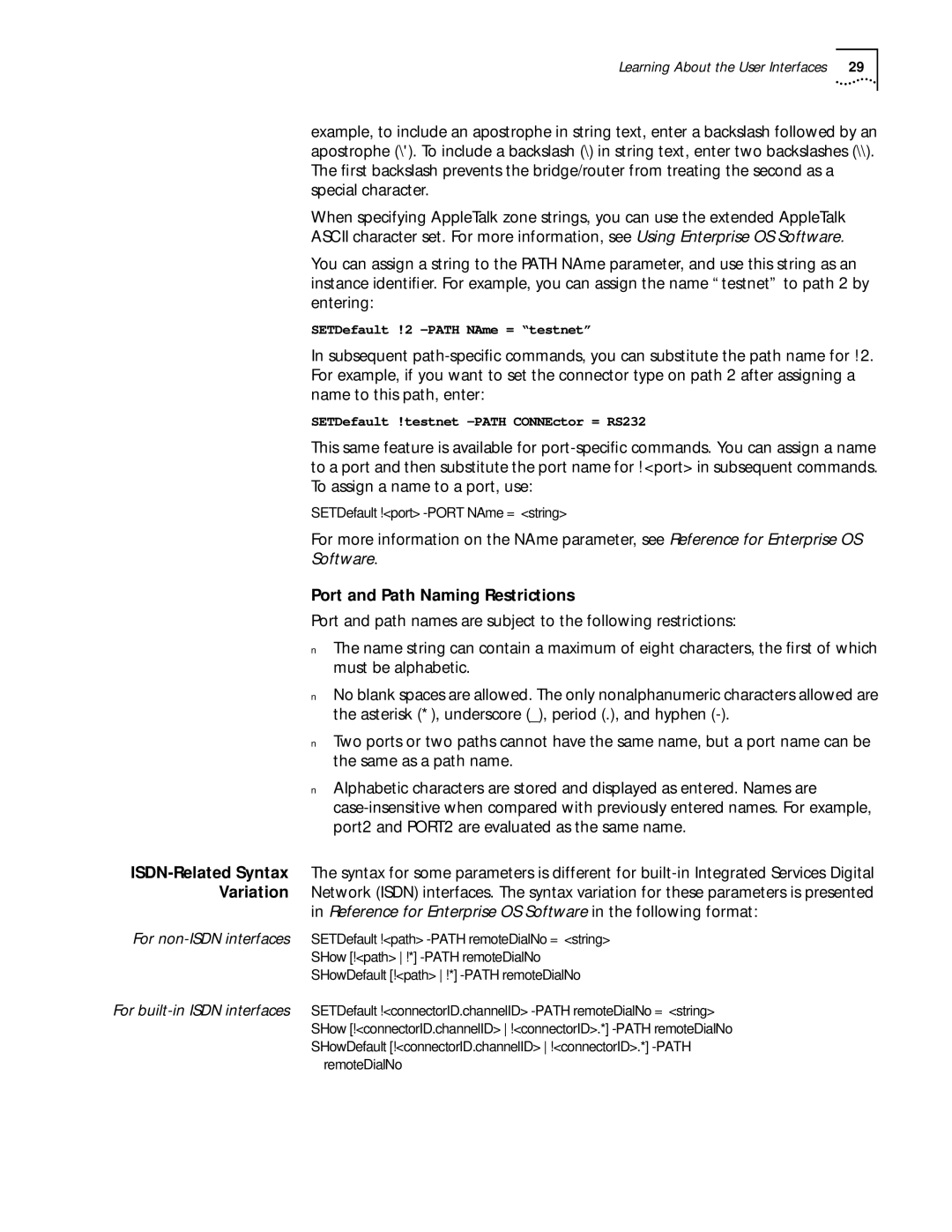Learning About the User Interfaces | 29 |
example, to include an apostrophe in string text, enter a backslash followed by an apostrophe (\'). To include a backslash (\) in string text, enter two backslashes (\\). The first backslash prevents the bridge/router from treating the second as a special character.
When specifying AppleTalk zone strings, you can use the extended AppleTalk
ASCII character set. For more information, see Using Enterprise OS Software.
You can assign a string to the PATH NAme parameter, and use this string as an instance identifier. For example, you can assign the name “testnet” to path 2 by entering:
SETDefault !2
In subsequent
SETDefault !testnet
This same feature is available for
SETDefault !<port>
For more information on the NAme parameter, see Reference for Enterprise OS
Software.
Port and Path Naming Restrictions
Port and path names are subject to the following restrictions:
■The name string can contain a maximum of eight characters, the first of which must be alphabetic.
■No blank spaces are allowed. The only nonalphanumeric characters allowed are the asterisk (*), underscore (_), period (.), and hyphen
■Two ports or two paths cannot have the same name, but a port name can be the same as a path name.
■Alphabetic characters are stored and displayed as entered. Names are
in Reference for Enterprise OS Software in the following format:
For
SHow [!<path> !*]
SHowDefault [!<path> !*]
For
remoteDialNo
